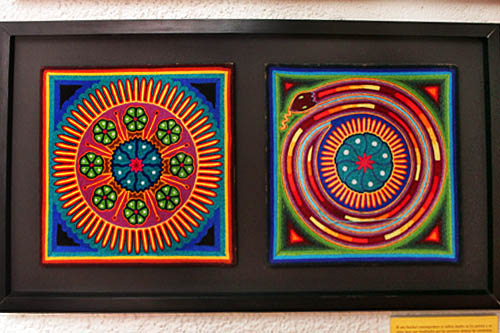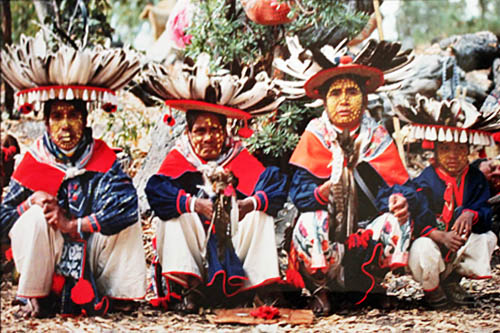The territory that today comprises the State of Zacatecas was originally inhabited by diverse ethnic groups who left important traces of their presence and cultural development, beginning with its name: Zacatecas is derived from the Nahuatl Indian word “zacate,” which means a place of abundant grass. The present day City of Zacatecas was founded in the sixteenth century when rich silver deposits were discovered in the area. Exploitation of the mines created a new class of aristocrats that rivaled those in Old Spain, and the newly wealthy filled the city center with distinguished colonial and Neo-Classic style buildings designed to reflect their importance. The Centro Historico (historic center) of Zacatecas is one of the best preserved historic cities on the American continent and since 1993, a UNESCO World Heritage Site.
Today, many of these exquisitely preserved buildings house the museums of Zacatecas, all of which are worth a visit. But with no less than nine major museums in the city center alone, there was no way I could possibly visit them all. I selected two that were most highly recommended.

The Rafael Coronel Museo de Mascaras Mexicana (Mexican Mask Museum) is perhaps best known, as it is included on every list of top attractions in Zacatecas. In this case, the lists are right; this is one museum that should not be missed, if only to stroll through its amazing, lush grounds. Housed in the former San Francisco Convent, the museum boasts the largest collection of masks in all of Mexico. The main exhibit, “The Face of Mexico,” presents a large portion of the ten thousand authentic masks in the museum’s collection, many of which are still used today by indigenous tribes during festivals and traditional ceremonies. Other exhibits include puppets from the Rosette Aranda Company, pre-Columbian pots and vases, terracotta figurines from colonial Mexico, and other art displays from pre-Hispanic to contemporary times, but the masks are the stars.

My other choice was the Zacatecano de Cultura Museo de Arte Huichol (Museum of Huichol Indian Art and Culture). The Huichol are a Native American people of Mexico who for centuries have retained their unique culture and pre-hispanic religious beliefs. Living primarily in the remote, rugged Sierra Madre Occidental mountains, the Huichol, more than any other native population, have resisted conversion to Christianity and absorption into Mexican culture.

Huichol people today create traditional art and practice ancient rituals that predate the Spanish conquistadors. Their colorful decorative yarn paintings, created by pressing hand-loomed wool yarn into a base of wax, are visual prayers to the gods that are left as offerings during pilgrimages to sacred sites. During these annual pilgrimages, male members of the tribe gather peyote, which is later consumed under the watchful eye of the village Shamans during a ritual ceremony designed to bring on “visions.”


Perhaps the most fascinating exhibit at the Huichol Museum was a series of photos of the Huichol from the archive of photographer Colette Lilly, an anthropologist lived in Mexico and studied the Huichol for 36 years. The museum director gave me special permission to take photos of the Lilly photos, and these are shown here courtesy of the Zacatecano Museum.
Can’t view the above slide show of the museums of Zacatecas, Mexico? Click here.
By the end of the second day I had barely scratched the surface. I would not be able to see the museums of abstract art, contemporary art, religious art, the Mexican Revolution, and interactive science displays, but I was definitely happy with the two I chose to visit.

Hi Heather. Just wanted to fill you in a little about peyote and ayahuasca. I live part time in San Luis Potosi, NYC, and Peru and this is my field of expertise. Ayahuasca is a vine. By itself it has little affect. It is mixed together with other plants and herbs from the Amazon basin to invoke visions. The main psycho active ingredient is DMT. The unpredictability of this mixture is a result of many different recipies and not from the Ayahuasca vine itself.
The main psycho active element in Peyote is Mescaline. However when the mescaline is isolated from the other amino acids and proteins, it has a very different and less favorable results. Thus the pure peyote plant strait out of the ground is far more powerful than the Ayahuasca vine and produces very different results.
I love all this wonderful colourful artwork – in the Amazon basin they use the plant ayhasca in a similar way to invoke visions under the supervision of shamans but apparently it can have rather unpredictable results